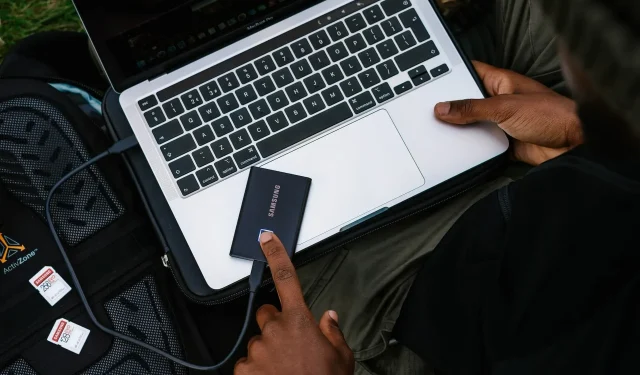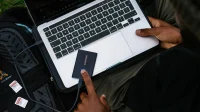When you plug an external hard drive, SSD, GPU, camera, iPhone, iPad, Android phone, flash drive, or any other device into your Mac’s USB port, they are immediately disabled and don’t show up in the Finder, Desktop, or related? application?
Repeatedly plugging and instantly disconnecting a USB device may cause device failure, data corruption, or permanent data loss! In this guide, we list solutions to fix USB devices not connecting to your Mac and other related issues.
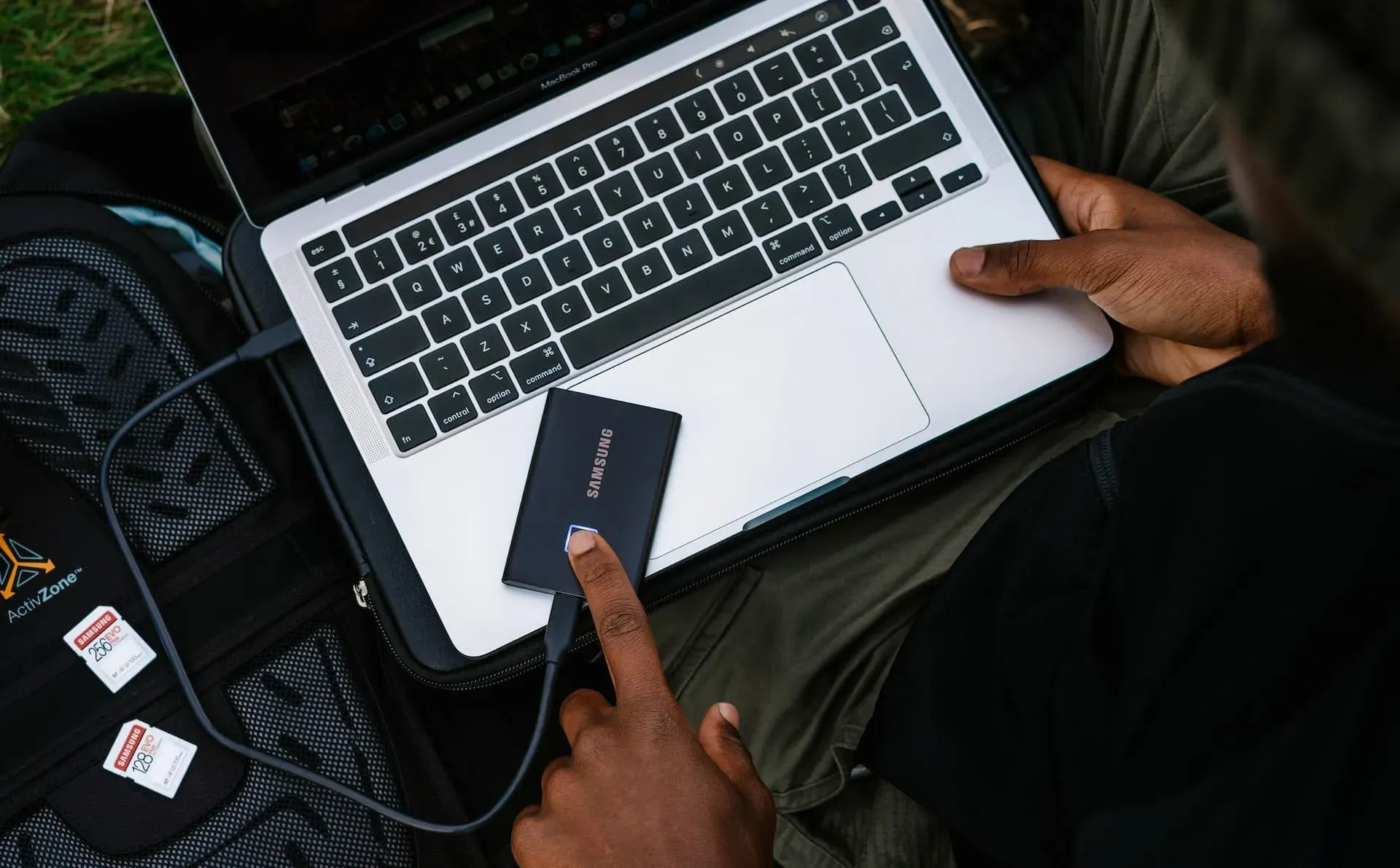
USB ports on modern Mac computers
Older MacBook Pros and MacBook Airs have USB Type A ports, while the latest models have switched to USB Type C (or Thunderbolt 3 and Thunderbolt 4) ports. Mac desktop computers such as iMac, Mac mini, Mac Pro, and Mac Studio can have a combination of multiple USB Type A ports and multiple USB Type C ports.
To connect an external device, all you have to do is plug it into a USB port on your Mac. If there is no port compatibility, you need a dongle like these USB-C hubs.
For more information, check out this Apple Support article to determine the ports on your Mac.
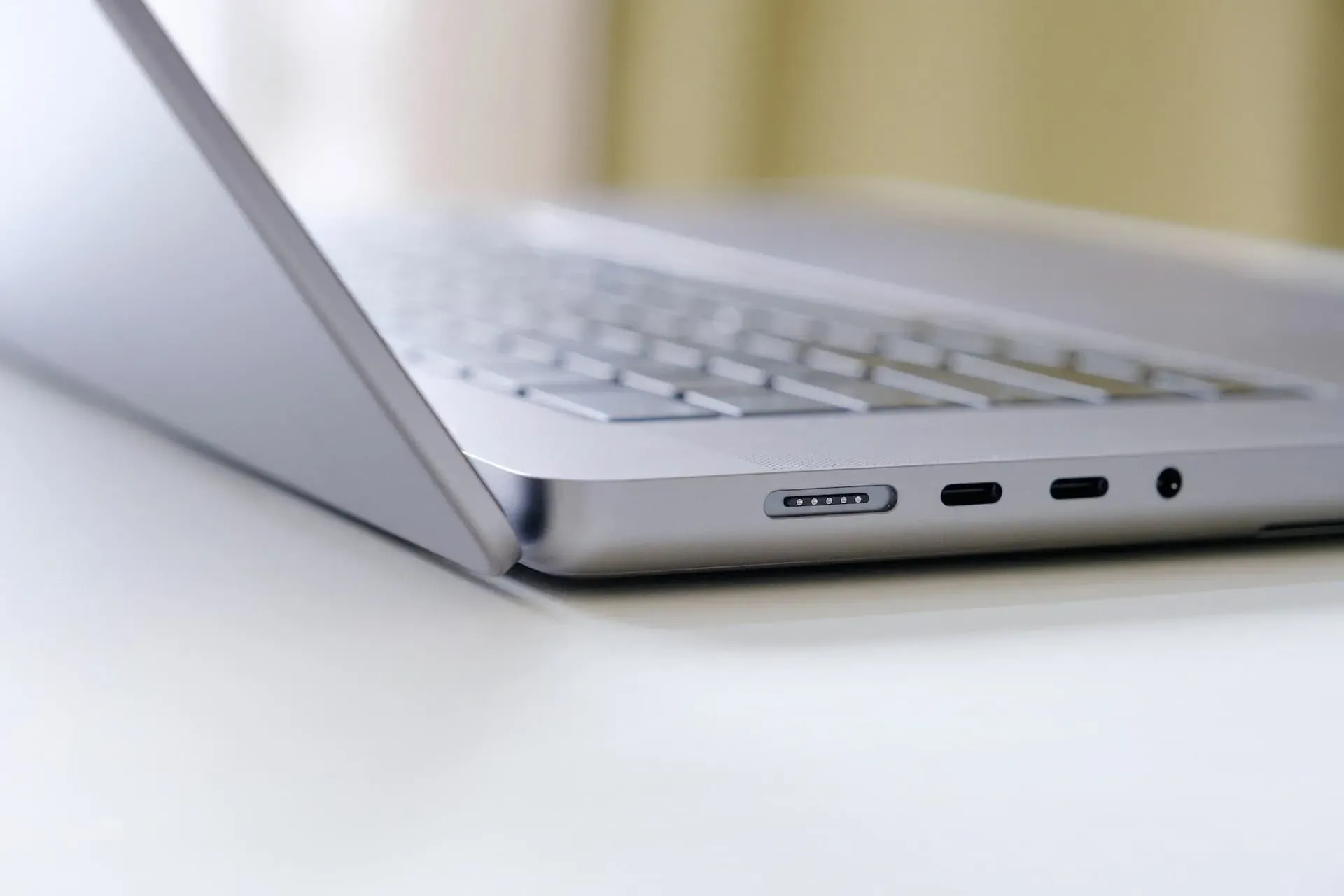
How to Connect USB Devices to Mac
iPhone, iPad and iPod
Follow these steps to connect your iOS and iPadOS device to a Mac running macOS Catalina or later:
- Connect your device to your Mac using the appropriate cable.
- Open Finder and click the name of your iPhone, iPad, or iPod on the left sidebar.
- Click “Trust”if you see it. Then unlock your iOS device and click on “Trust”and then enter the device passcode.
- Your iPhone, iPad, or iPod is now connected to your Mac and visible in the Finder.
Android phone
Here is how to connect Android phone to Mac:
- Install Google’s Android File Transfer app on your Mac and open it.
- Connect your Android phone to Mac with the appropriate cable.
- Open the notification center of your Android phone or view any pop-up window and select Data Transfer.
- Your Android phone is now connected to your Mac and you can see it in the Android File Transfer app on Mac to share music, videos, photos, files, etc.
SD card, flash drive, external hard drive or SSD
You can easily connect external storage devices to your Mac, just follow these steps:
- Use the appropriate cable to connect your device to your Mac.
- Open Finder and you should see the external drive in the Finder sidebar or desktop. If not, follow the solutions below. Note. Some external SSDs, such as the Samsung T7 Touch, have fingerprint protection. Make sure you are authenticated before trying to use it on a Mac.

Why USB devices won’t connect to Mac
External devices can repeatedly disconnect or fail to connect and show up on your Mac due to software or hardware issues, lack of compatibility, lack of power, etc.
Software issues include macOS bugs and crashes or driver issues on external devices. Hardware issues can include a broken pin inside the USB port, broken cables, unnecessary movements, and the like. On the other hand, lack of power means that your external drive is not getting enough power to work properly, causing it to struggle and keep plugging and unplugging, or not showing up at all!
How to fix a USB device that won’t connect to Mac or automatically connects and disconnects
Make sure you follow the solutions according to the device you are trying to use with your Mac.
1. Make sure your external devices show up in the Finder and on your desktop.
- Make sure you are in Finder. When you are, your Mac shows the Finder next to the Apple logo () in the top menu bar.
- Press the Command + Comma (,) keys to access Finder preferences.
- In the General section, check the boxes for external drives and CDs, DVDs, and iPods to allow them to appear on your Mac’s desktop.
- Next, go to the Sidebar section. Under the “Locations”heading, check the “External drives and CDs, DVDs and iOS devices”box. After that, the devices you connect to your Mac will show up in the Finder.

2. Check whether the device is connected or not
Before moving on to the next fixes, it is important to know if the device is connected to your Mac or not. Here’s how to check it:
- Connect an external USB drive or device to your Mac. It’s okay if you don’t get visual confirmation.
- Hold down the Option key, click the Apple () icon, and choose System Information.
- Select Storage from the left sidebar.
- Here, if you see an external drive, it means that the device is connected to your Mac, but due to software issues, it cannot be used. In this case, the solutions below should help. You can skip the four solutions immediately under this heading.
- However, if the external drive doesn’t show up here, follow the solution here carefully, including the four mentioned just below this image.
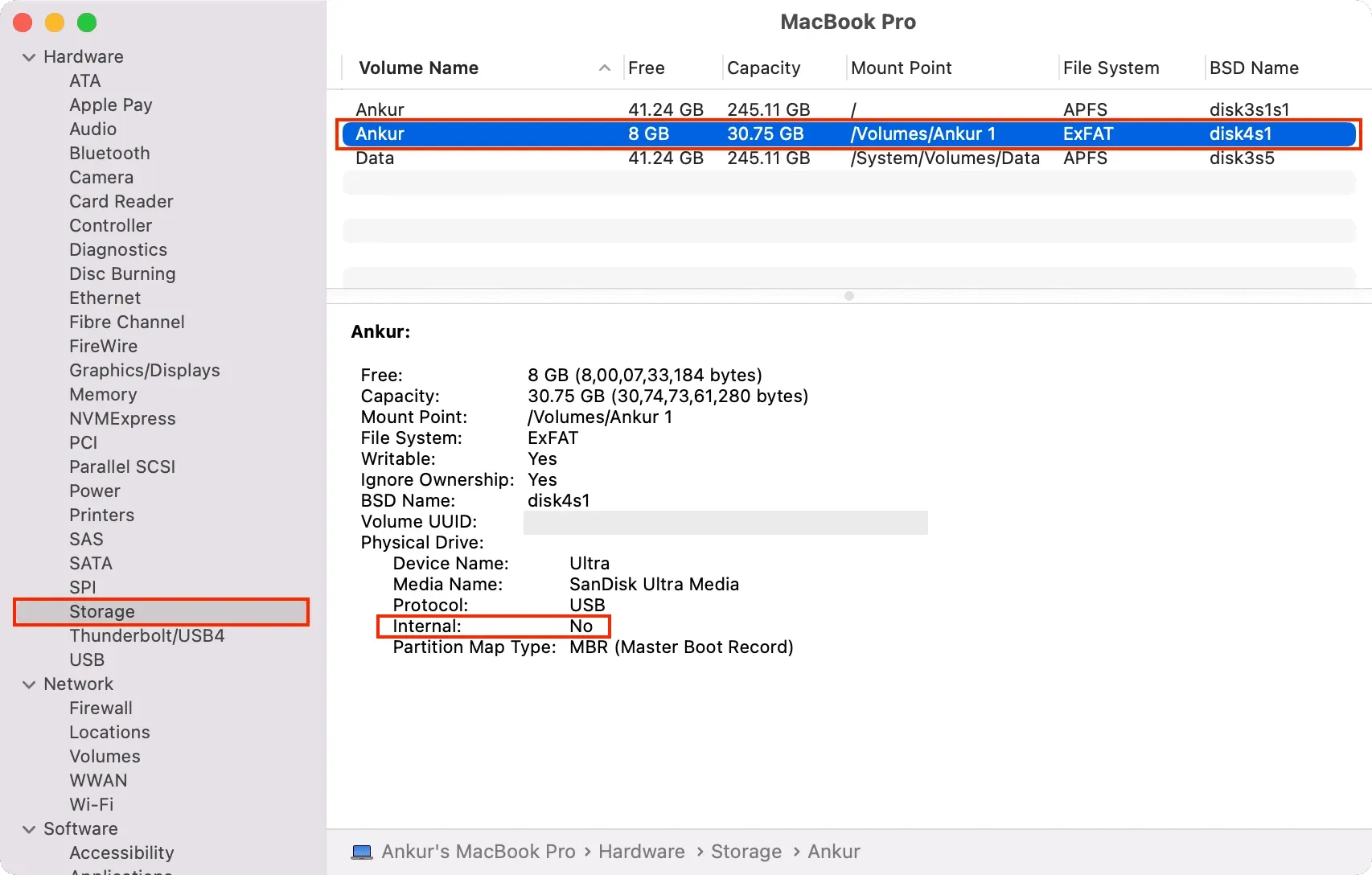
3. Check all physical connections and try again on other ports.
It’s pretty simple, but necessary. Be sure to try different ports on your Mac or USB-C. Then focus on connection points and make sure everything is perfect. Sometimes unplugging other USB devices and plugging in just one should do the trick.
4. Keep the USB device and Mac on the table or floor.
Some people hold their phone or USB device in their hand and fiddle with it while it’s connected to the Mac. Please, do not do that! Instead, keep your Mac and connected USB device on a table or hard surface and don’t move them around. Often a wired connection is not perfect at the connection points and breaks at the slightest movement.
5. Clean USB ports
Are your Mac’s USB ports filled with dust and debris? If so, use a soft, dry cloth or Q-tip to thoroughly clean the ports. Then try to connect the device again.
6. Check the USB-C key and make sure it’s not too hot.
Before moving on, it’s important to make sure the key isn’t too hot. If so, the device may not show up on your Mac. To resolve this issue, simply unplug your USB-C hub and let it cool down.
7. Quit all Mac applications
In rare cases, an open application may be preventing an external device from displaying on your Mac. To resolve this issue, save your current work in all open applications and follow these steps:
- Press the Command+Option+Esc keys.
- Press Command + A to select all open apps.
- Click Force Logout.
- Once that is done, reconnect the USB device and see if it connects to your Mac or not.

8. Restart your Mac
When something is not working properly, restarting is a reliable and time-honored method to fix the problem. Click the Apple () icon and select Restart. After that, disconnect and reconnect the USB device to your Mac.
9. Reboot the external device (if applicable).
If the device you are trying to connect can be restarted (such as a smartphone), be sure to do so. Obviously, this solution does not apply to flash drives, SSDs, etc.
10. Turn off power saving mode and other power saving options on Mac.
Some external USB devices may not receive enough power from your Mac if it is in low power mode or other power saving modes. To resolve this issue, disable Low Power Mode by going to System Preferences > Battery > Battery/Power Adapter.
If you are using any third party battery saver app for Mac, also close it.
Finally, if something still doesn’t work, plug your MacBook into a charger while trying to use a USB device. Also, if the USB device, such as an external GPU, has its own power supply, make sure it is plugged into a power outlet.
11. Make sure the drive is formatted for macOS.
Not all hard drives, solid state drives, flash drives, and storage devices will work on a Mac. Some of them may not even show up as a valid drive, while other formats may only offer read-only permissions and prevent you from adding new data to the drive.
To fix this problem, go to our post titled How to Erase and Format External Drives on Your Mac. This will tell you about the various file formats and help make the storage device usable with your Mac.
12. Run First Aid and repair the disk in Disk Utility.
If the storage device is connected to your Mac but is displaying errors, try using Disk Utility to fix the problem:
- Open Disk Utility which comes preinstalled on all Macs.
- Select your USB drive from the left sidebar.
- Click First Aid.
- Click Run. Disk Utility will now check the disk for errors and fix them if it’s within its capabilities.

13. Reset location and privacy settings if iPhone or iPad won’t connect
Can’t connect your iPhone or iPad to your Mac? Just go to the iOS Settings app > General > Transfer or Reset iPhone > Reset and select Reset Location & Privacy.
Then reconnect your iPhone to your Mac, select it in the Finder sidebar, and trust it.
If the issue persists, check out these 15 solutions to fix iPhone not showing up in Finder on Mac.
14. Test the external device on another computer.
If the problem persists, try using the external drive with another Mac owned by a friend or family member. If the disk is working, you can conclude that the problem lies with your Mac.
15. Update the relevant application
Sometimes an external USB device may only show up in a certain app on Mac. For example, many Android phones may not show up as storage devices in the Finder but show up in the Android File Transfer app or other similar apps. Update such Mac apps to read the USB device and make it usable.
16. Stop usbd process
If USB connection issues persist, try stopping the usbd process using Terminal. This can cause your connected device, such as an iPhone, to charge slowly through your Mac, but provide a solid connection and prevent the device from turning off automatically.
To do this, open a Terminal and paste the following command:
sudo killall -STOP -c usbd
Then press the Return key and enter your Mac’s password. Now disconnect and reconnect the USB device and see if it works or not.
After you’re done with your work, or if the above command didn’t change anything, follow the same steps, but this time, use this command to continue the usbd process:
sudo killall -CONT -c usbd
17. Try connecting the USB device in safe mode.
Have you been able to connect USB devices to your Mac but haven’t been able to lately? If yes, start your Mac in safe mode and connect your USB device. If the USB device can be used in safe mode, we can conclude that some recently installed application or program on your Mac is causing problems with external devices. You can fix this by uninstalling the apps you recently installed on your Mac. Here are all the tutorials you need:
- How, why and when to boot your Mac in safe mode
- How to uninstall apps on Mac
- 3 Ways to Uninstall Chrome Apps on Mac
18. Update your Mac
Are you using an older version of macOS? If yes, go to System Preferences > Software Update to install the latest available build of macOS for your computer.
19. Reset SMC and NVRAM/PRAM
Finally, if nothing worked after doing all the above solutions, reset your Mac’s SMC and NVRAM/PRAM. Completing these tasks is not difficult, and our guides will help you through the process:
- Reset SMC on your Mac
- Reset NVRAM on your Mac
After resetting SMC and NVRAM/PRAM, external USB devices should connect, appear, and work normally on your Mac.
I hope you can now connect your USB devices to your Mac and use them successfully. Do you have another solution that worked for you? If yes, please post them in the comment sections below.
